Luca Bombassei, an architect, collector, and patron, grew up surrounded by ancient art, initially rejecting it, only to rediscover it later. Today, the balance between ancient and contemporary has become the defining feature of his work as a designer. He shares his story with us, offering valuable insights into how the new generation of collectors has successfully bridged these two worlds.
When did you start collecting?
It was about 30 years ago. I started with photography, which is easier and more accessible for a beginner. I believe my first acquisition was a nearly all-white landscape photo: a small hunting lodge on a snow-covered plateau, beneath the horizon of a milky sky. A minimalist image, perfectly in tune with the aesthetic of the 90s. What truly captivated me was the interplay between architecture and nature, a theme that still resonates with me today. It was then that I thought, ‘Let’s take a look around and see what else is there.’
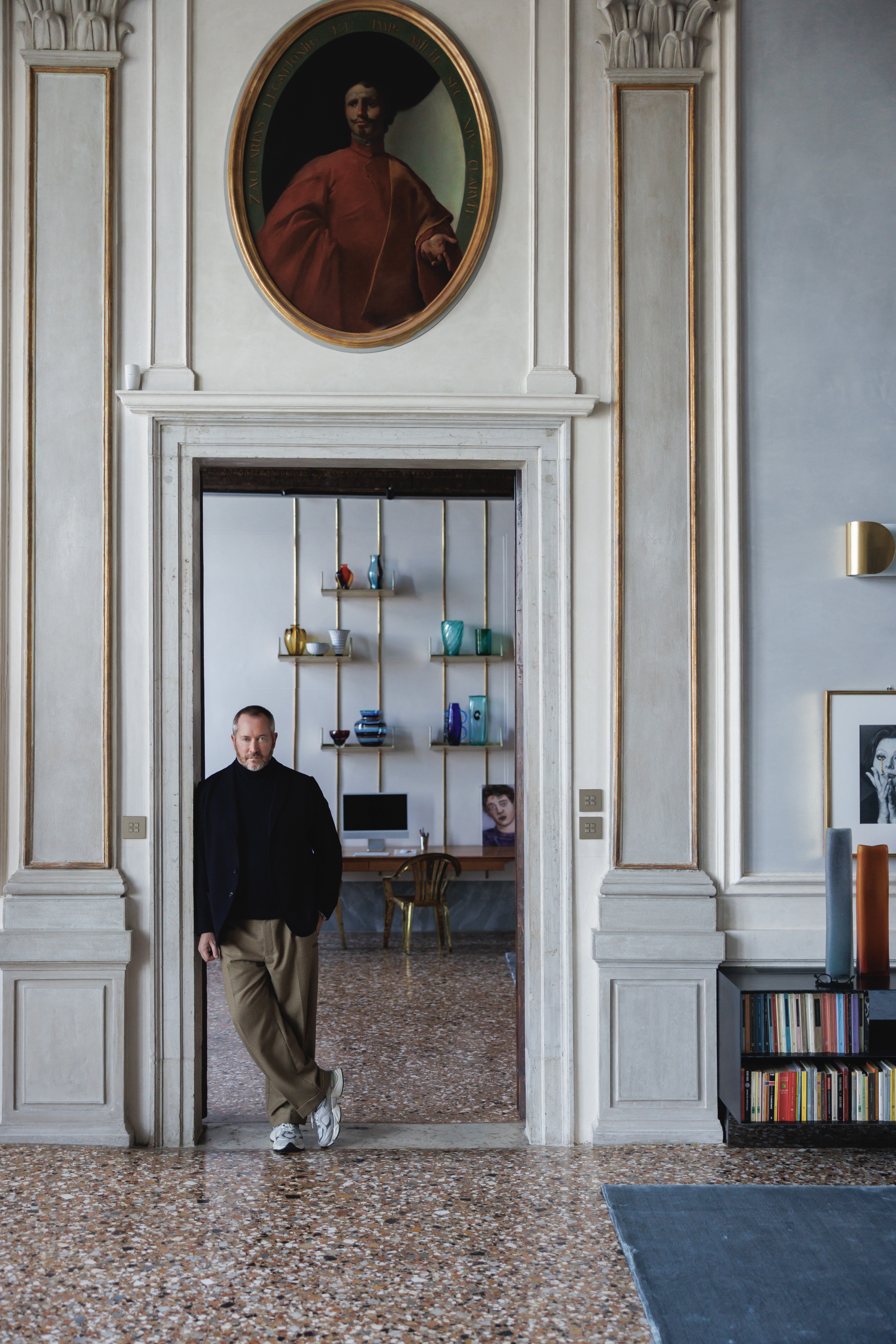
Why do you still collect?
I’ve discovered that it’s an endless well of inspiration, both in my personal life and in my work. My interests in collecting have evolved alongside my profession, where, as in any creative activity, the search for inspiration and perspectives beyond one’s own is essential. Art opens doors to worlds you never imagined or knew existed. The allure of knowledge is incredibly powerful, and as I’ve always said, ‘Consistency is for those who lack ideas.’ So, let’s embark on a journey to discover all the possible worlds.
How do you approach collecting? Do you act on impulse or plan ahead?
I admire those who collect in a scientific way, but I do it entirely on instinct. I enjoy engaging with people I trust, listening to their opinions, but ultimately, I follow my own intuition. Or perhaps I should say my Ego.
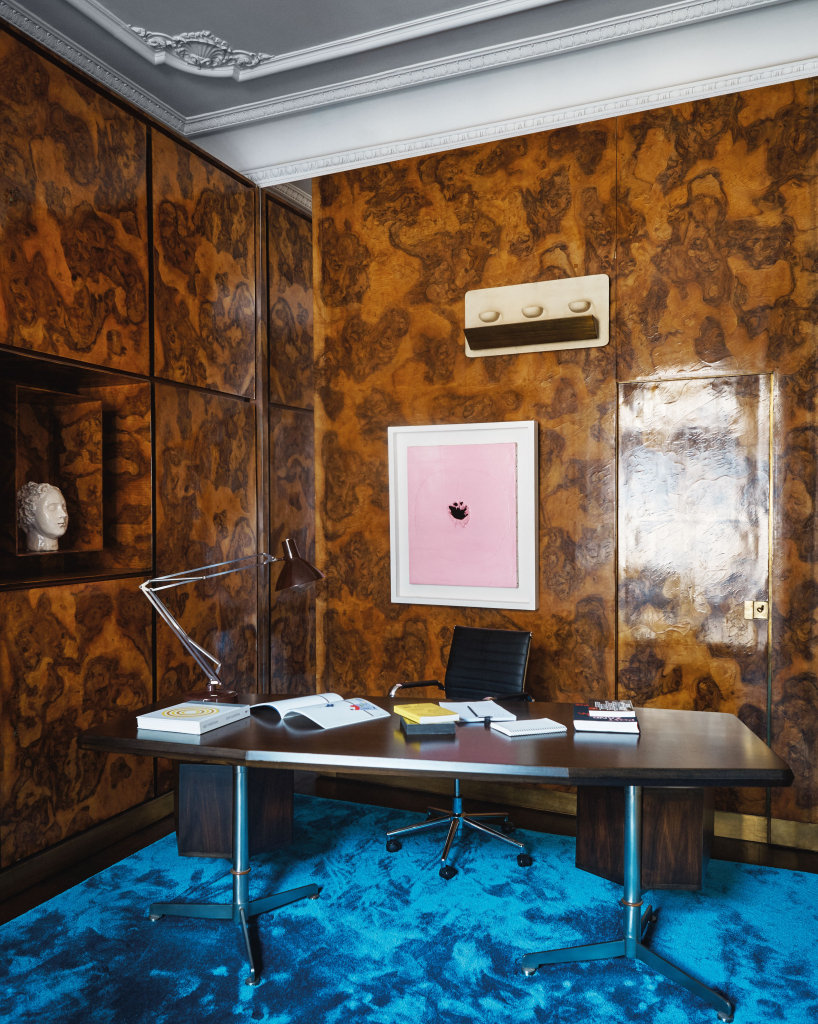
Have you ever felt like you made a bad purchase? How did you react?
Yes, it happened. However, I’ve never resold anything: I keep those pieces as a reminder. In fact, I believe it gave me the chance to reconsider my perspective. And then, fortunately, as time passes, we often find ourselves changing our minds and preferences. We learn to appreciate what we didn’t understand before.
What are your all-time favorites?
It’s hard to say. They’re constantly changing, thanks to the new perspectives that emerge as they move from one home to another. Perhaps it’s a professional bias, but I believe that a work, when placed in a different context, can take on a whole new energy. I’m constantly shifting my work around, even within the same house. In the farmhouse I renovated in Puglia, for instance, the walls are dotted with nails that I no longer bother to remove.
So, is there a connection between the artworks you collect and the homes they’ll end up in?
Well, the feelings a work evokes in Puglia might not be the same if I brought it to Venice. But beware: I never purchase a piece with the intention of placing it in a specific location, let alone because it matches the decor. When I choose a piece, I do it without any conditions or constraints… You have to be a bit fatalistic. Then it begins to travel between my homes – Veneto, Lombardy, Puglia – until I discover where I feel comfortable with it and where it feels comfortable with me. I like to imagine that the works have a life of their own, and interacting with them brings me immense satisfaction.
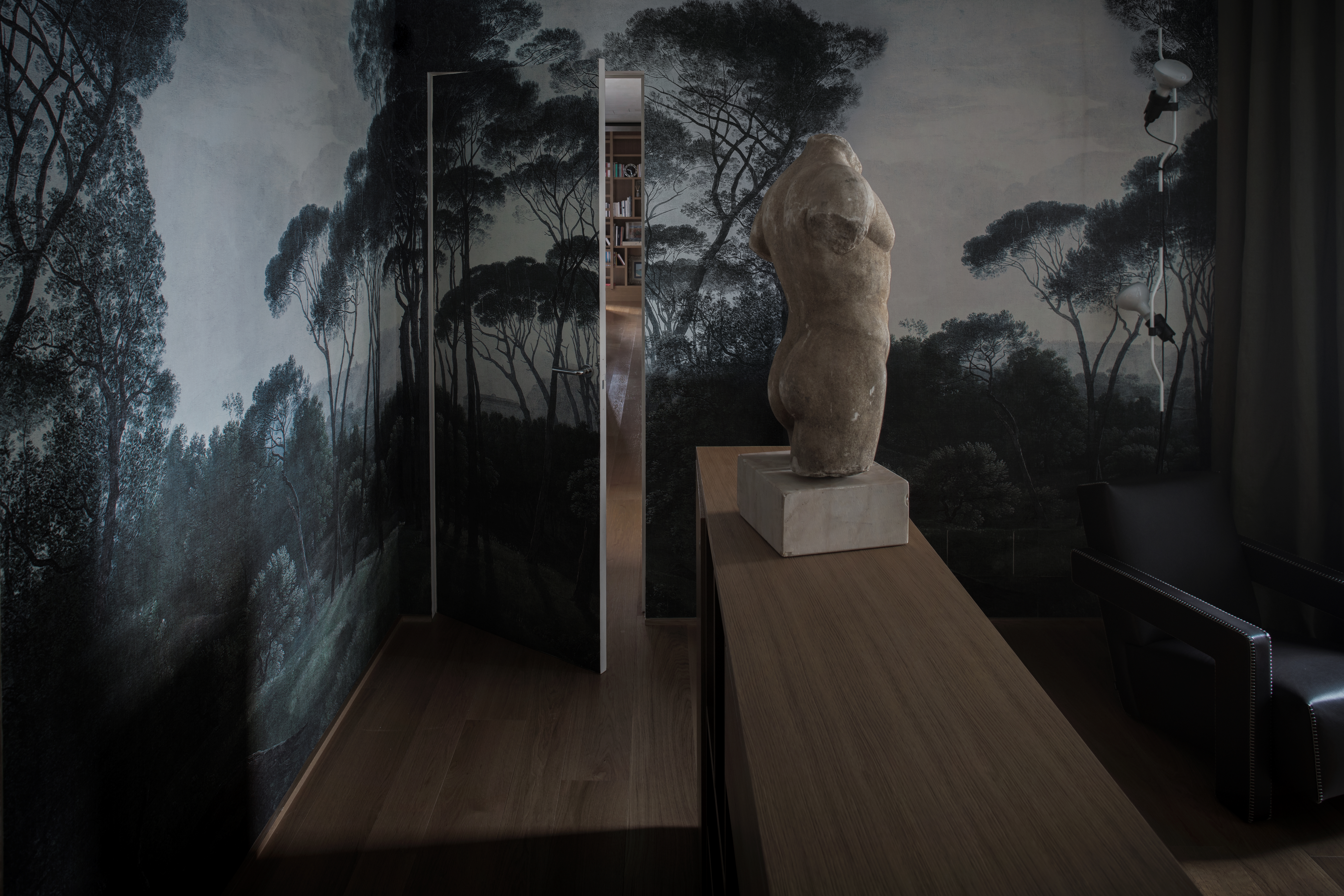
Would you describe your collection as diverse, or does it have a specific focus?
Without a doubt, it’s a diverse collection: from Olivier Mosset’s ultra-contemporary site-specific installation to pieces by renowned artists like De Chirico and Picasso. However, I can point out some specific areas of interest: I have a significant collection of works by female artists, particularly in Venice, as well as contemporary African art and pop art.
How about antiques?
I come from a family where, in the 1980s, antiques were a must. Perhaps it was an inevitable reaction: I felt overwhelmed by that world and turned towards the contemporary, only to find a serene balance where historicized design and art can coexist with the contemporary world.
I believe there’s a large ‘Capriccio con rovine’ by Canaletto in your Venice home.
Indeed, it belongs to my father. He agreed with me that this was the perfect spot for it, as it perfectly resonates with the context: it was like bringing Canaletto back home. After all, I don’t deny myself the pleasure of savoring a masterpiece.
What did you choose to display next to the Canaletto?
Opposite, you’ll find a Capogrossi and a piece by Nathlie Provosty, a striking all-black painting. This creates a perfect dialogue between opposites, fostering a harmonious interplay of ideas. In the center, acting as a mediator, I placed a sculpture by Francesco Vezzoli: a Roman bust with a head that is a fusion of its own, inspired by De Chirico’s muses. In this work, the artist revisits the ancient and brings it into dialogue with pop icons.
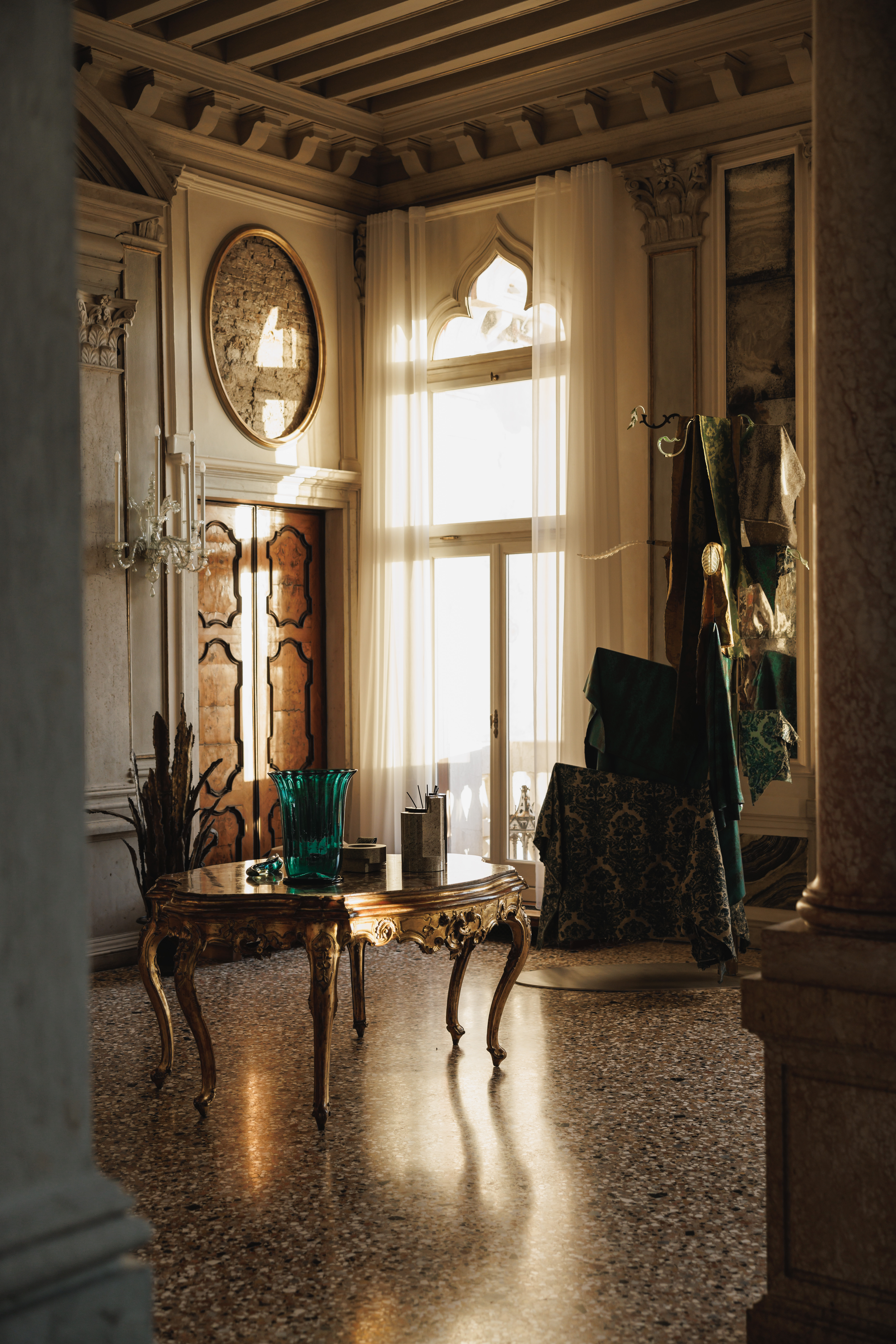
Speaking of the dialogue between the ancient and the contemporary, is it a common exercise you encounter in the homes you design for your clients?
In reality, until about twenty years ago, it was either all antiques or nothing. Today, I believe it’s crucial to strike a balance, a harmonious blend of both dimensions. Clients are also increasingly open to the idea that the old and the new can coexist. Personally, I always strive to incorporate an antique element into my projects, a piece that embodies the intrinsic quality of artisanal excellence – a value I attribute to antiques and consider essential.
What do collectors and clients typically request?
To stage as many works as possible. As you can imagine, accumulation is my biggest enemy. I believe it’s crucial to have the courage to acknowledge that some things just don’t mesh well together. The ideal approach is a targeted selection that enhances the overall impact. You don’t need to display everything: it’s better to dedicate a room to the archive. Recently, I designed a modular grid system, similar to those used in museums but on a smaller scale. This system allows you to store works and, if desired, easily rotate them.
Who are the masters you draw inspiration from when designing?
I’ve been deeply inspired by Carlo Scarpa, a pioneer in reimagining the way we exhibit art. His interventions in historical contexts are masterful examples of how to restore centrality to works, showcasing them through contemporary structures.
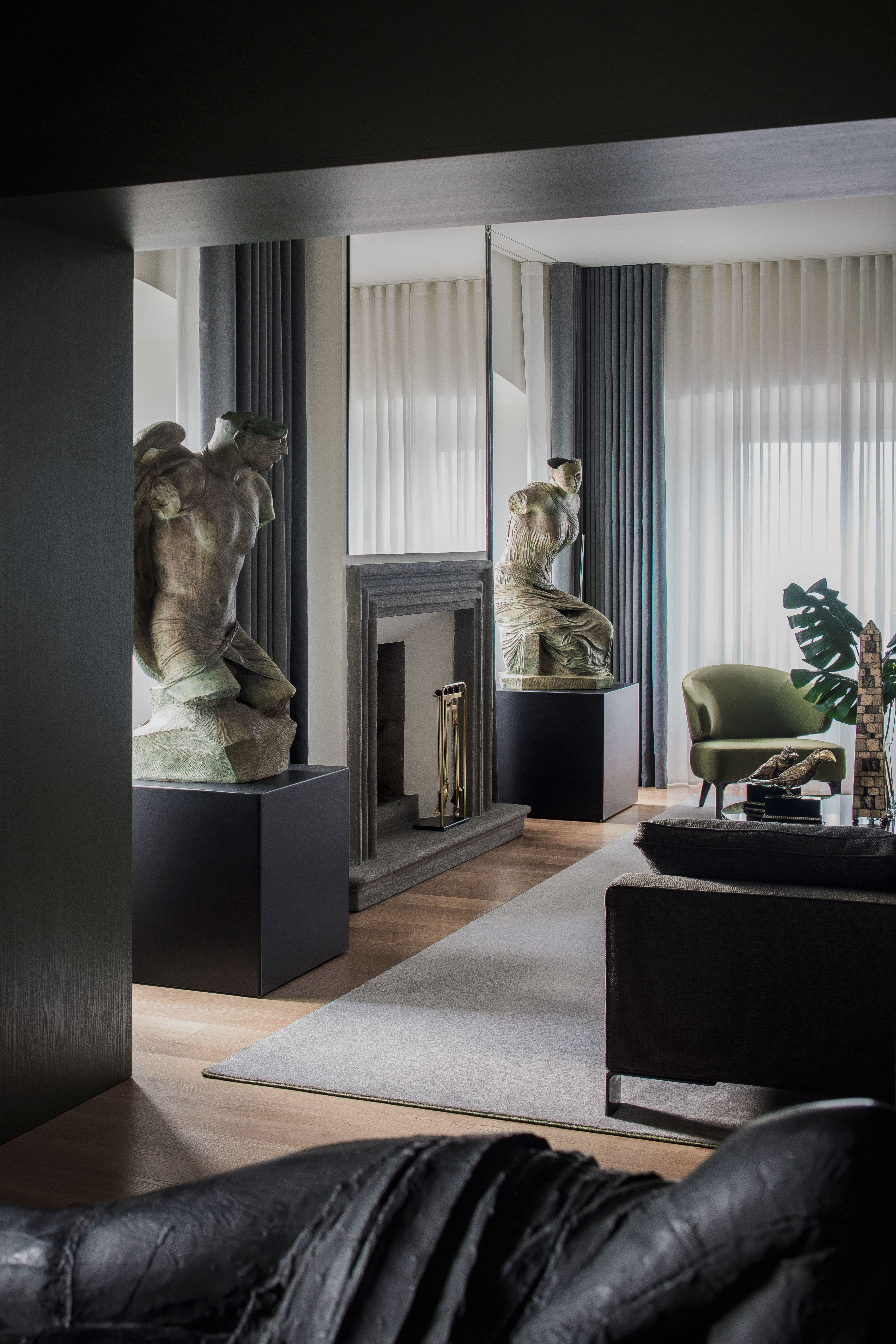
So, what strategies can we implement, for instance?
Using metal or padded fabric as a background is an intriguing solution: it creates a unique world for the work. This approach not only highlights the displayed piece, but also fosters a more harmonious connection with its surrounding context. Another option is to place a painting on an easel, allowing you to observe the back of the canvas, perhaps revealing its secret history and offering a three-dimensional experience.
When it comes to lighting, is natural or artificial better?
During my time at university, I spent a year in Copenhagen, where the days are either incredibly long or incredibly short. During my time there, I had the opportunity to deeply explore the concept of light. However, I can’t decide which one I prefer. Undoubtedly, light is as crucial an element as the architecture itself. Natural light brings the work to life, making it dynamic and changing with the passing of time. This is one of the key differences: in a museum, light is often artificial and static, while in a home, it adapts to the daily rhythms of those who live there.
Indeed, there is a school of thought that believes artworks are more alive at home than in a museum.
The concept of bringing art to life is likely the aspect of collecting that I cherish most. And precisely because the works, as we mentioned, have their own energy – stories to tell – it’s crucial to give them the right space, ensuring they don’t get overshadowed by nearby pieces.

Do you believe that collecting is a genetic trait, as some people claim?
Perhaps there’s something in our DNA. I think of my father: he loved painting, but unable to pursue the path of the artist – considered inappropriate at the time – he began collecting, after becoming an entrepreneur. However, I believe the environmental factor holds greater significance. Growing up surrounded by artworks and art books has undoubtedly shaped me. That said, there are so many ways to collect that I struggle to believe in a true genetic predestination.
You’ve mentioned that you always incorporate something ancient into the houses you design, but antiques aren’t necessarily part of your collection project. However, have you ever felt the desire to own a piece of the past for yourself?
Absolutely, I have a passion for antiques and have made a few purchases. The last time I fell in love was with glass. Despite my preference for the era when glass and design converged, particularly in Venice from the 1930s, I am equally captivated by authentic antiques, steeped in 300 or 400 years of history. It’s truly moving to think that something so special and fragile can withstand the test of time.
10 February 2025


